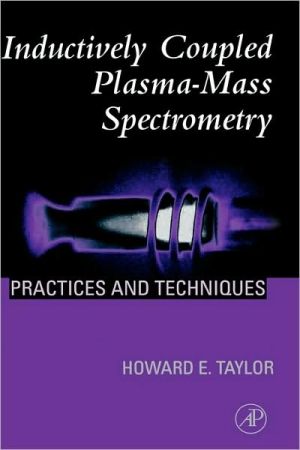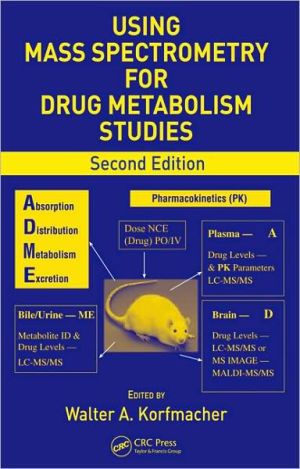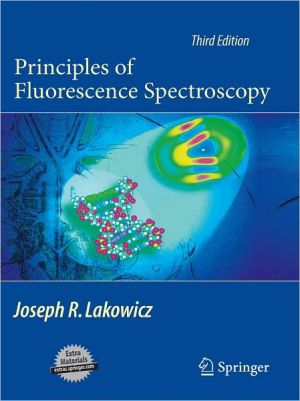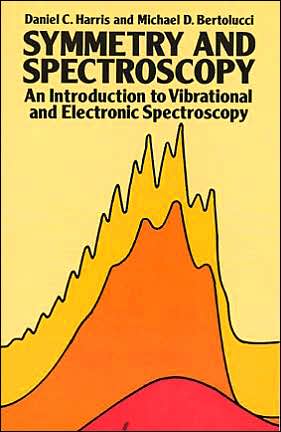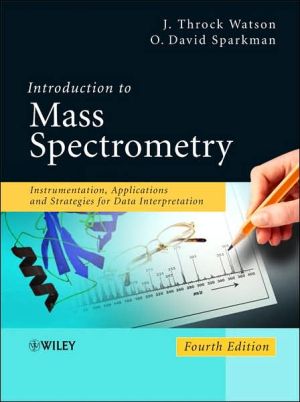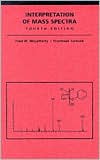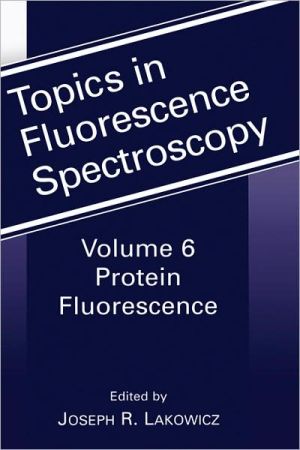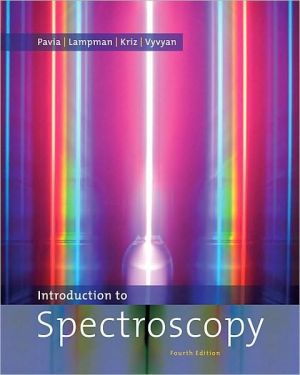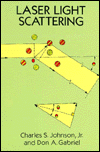Inductively Coupled Plasma-Mass Spectrometry
Inductively Coupled Plasma-Mass Spectrometry presents a concise A-Z description of inductively coupled plasma-mass spectrometry, written in layman's terms, for use in the solution of trace element analytical chemistry problems. Detailed discussion of sample introduction and data interpretation is provided.\ Practicing analytical chemists will be able to use this text to familiarize themselves with the principles, approaches, options, pitfalls, and advantages of ICP-MS technology.\ Key...
Search in google:
Inductively Coupled Plasma-Mass Spectrometry describes the basic principles of inductively coupled plasma-mass spectrometry as an elemental chemical analysis tool. In addition to emphasizing the configuration of instrumentation and the operational characteristics of the techniques, the book provides thought-provoking ideas about how the practicing analytical chemist can use the advantageous features of ICP-MS technology to solve difficult trace element analysis problems. It also includes information on processing and interpreting results to obtain high-quality data.The book is excellent as a textbook for short courses on atomic spectrometric analytical techniques, trace element analysis, instrumental analysis, and analytical chemistry. It is also appropriate as a supplementary text for graduate courses involving analytical chemistry or trace element analysis, particularly in chemistry, environmental science, geology, engineering, oceanography, archaeology, physics, and biology. In addition, this text will provide an ideal reference book for practicing analytical chemists in industrial, governmental, and academic laboratories, especially scientists who have not had previous exposure to this technology. John W. Olesik ...well-written and easy to read...a good introduction to ICP-MS.
About the Authorxi1Introduction1.1History21.2Overview32Atomic Structure2.1Bohr Model82.2Isotopes102.3Ionization113Inductively Coupled Plasmas3.1Plasma Formation163.1.1Generators17Crystal-Controlled Oscillator17Free-Running Oscillator18Solid-State Generators193.1.2Load Coils203.1.3Torches203.2Plasma Configuration234Instrumentation4.1Interface304.2Ion Lenses314.3Mass Spectrometers344.3.1Quadrupole Mass Analyzer34Scanning36Peak Hopping38Resolution38Abundance Sensitivity394.3.2Magnetic Sector Mass Analyzer40Single Focusing40Double Focusing414.3.3Time-of-Flight Mass Spectrometer444.3.4Ion-Trap Mass Spectrometer464.4Detectors474.4.1Continuous Dynode Electron Multiplier474.4.2Discrete Dynode Electron Multiplier494.4.3Faraday Cup505Sample Introduction5.1Gaseous Samples555.1.1Vapor Generation56Hydride Generation56Osmium Tetroxide Vapor58Cold-Vapor Mercury605.1.2Chromatography60Vapor Phase Chromatography60Supercritical Fluid Chromatography625.2Liquid Samples625.2.1Nebulizers63Spray Chamber64Pneumatic Nebulizer67Ultrasonic Nebulizer735.2.2Electrothermal Vaporizers765.3Solid Samples795.3.1Ablation Methods81Laser Ablation81Spark Ablation855.3.2Slurry Nebulization875.3.3Direct Insertion886Special Techniques6.1Flow Injection916.2Chromatography956.2.1Liquid Chromatography956.2.2Ion-Exchange Chromatography976.3Field Flow Fractionation987Quantitation Techniques7.1Qualitative Analysis1047.2Semiquantitative Analysis1067.3Quantitative Analysis1087.3.1Direct Calibration109Calibration Curves109Internal Standardization1127.3.2Standard Addition1157.3.3Isotope Dilution1177.3.4Quantitation Strategy1228Interferences8.1Spectrometric Effects1268.1.1Isobaric Spectral Overlap1268.1.2Polyatomic Molecular Spectral Overlap128Polyatomic Molecules from Plasma Gas Components129Molecular Oxides129Sample Matrix/Acid Components131Reaction/Collision Cells1348.1.3Doubly Charged Ions1368.1.4Background1368.2Nonspectrometric Effects1378.2.1Matrix Effects1378.2.2Physical Effects1399Optimization9.1Parameter Optimization1449.2"Cold Plasma" Operating Conditions14710Figures of Merit10.1Sensitivity15010.2Detection Limits15110.3Precision15510.4Accuracy157References161Appendix 1Table of Elements with Atomic Number, Weights, and First and Second Ionization Potentials163Appendix 2Isotopic Composition of the Elements167Appendix 3Prominent Polyatomic Interferences Applicable for ICP-MS Determinations175Appendix 4Table of Student's t Distribution179Appendix 5Certified Standard Reference Materials Available from the U.S. NIST and the NRC of Canada181Appendix 6Supplemental References187Index289
\ From the Publisher"The Editor, Professor Steve Hill, states in the preface that the purpose was to produce a book that covers both theory and applications in a concise, informative and readable form. This has certainly been achieved and the book is a very welcome addition to the literature."\ "...The content is excellent. I am very pleased to have a copy of this book for my own use and it would be amongst my first-choice texts to recommend to students or those who have little or no previous experience of plasma source spectrometry."\ --B. L. Sharp, Department of Chemistry, Loughborough University, TRENDS IN ANALYTICAL CHEMISTRY,Vol.19, No.8, August 2000\ "...well-written and easy to read...a good introduction to ICP-MS."\ --John W. Olesik, Ohio State Univ., Journal of American Society of Mass Spectrometry\ \ \ \ \ \ John W. Olesik...well-written and easy to read...a good introduction to ICP-MS.\ \
